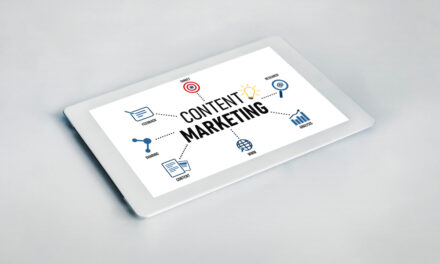Introduction
Are you a coach, expert, or consultant with valuable knowledge and skills, but struggle to reach your target audience and scale your business online? Don’t worry; you’re not alone. Many professionals like you face the same issue, primarily due to a lack of understanding of how to create and optimize high-converting sales funnels. In this blog post, I will walk you through the process of building a sales funnel that generates consistent leads and converts them into paying clients. By the end, you’ll have a clear roadmap and actionable steps to start leveraging the power of internet marketing.
I. Understanding the Sales Funnel
A. Definition of a Sales Funnel
A sales funnel is a visual representation of the customer journey from the moment they become aware of your brand to the point of making a purchase or signing up for your service. It illustrates the stages a prospect goes through before becoming a customer and helps you understand the bottlenecks in your marketing strategy.
B. The Stages of a Sales Funnel
There are four main stages in a sales funnel:
- Awareness: This is the stage where potential customers become aware of your brand, product, or service. They may find you through social media, blog posts, online ads, or referrals.
- Interest: Once your prospects are aware of your brand, they begin to show interest in your offering. They may visit your website, read your blog, or subscribe to your email list.
- Decision: In this stage, prospects evaluate whether your product or service is the right fit for them. They may compare your offering with competitors or consider different pricing options.
- Action: Finally, the prospect takes the desired action, such as purchasing your product or signing up for your service.
C. The Purpose of Each Stage
Each stage of the sales funnel serves a specific purpose in guiding your prospects towards conversion:
- Awareness: Attract and engage your target audience.
- Interest: Provide valuable information and nurture your prospects.
- Decision: Address objections and showcase the benefits of your offering.
- Action: Offer a compelling call to action that prompts the prospect to take the desired step.
II. Identifying Your Target Audience
A. Importance of Knowing Your Target Audience
Knowing your target audience is crucial for creating a high-converting sales funnel. It allows you to create tailored content and offers that resonate with your prospects, ultimately leading to higher conversions.
B. Tips on How to Identify Your Target Audience
- Analyze your existing customers: Look for commonalities among your current customers to identify patterns and trends.
- Research your competitors: Study your competitors’ target audience and identify any potential gaps in the market.
- Survey your audience: Gather insights from your existing audience through surveys, interviews, or focus groups.
C. Ways to Create a Buyer Persona for Your Target Audience
A buyer persona is a semi-fictional representation of your ideal customer, including their demographics, interests, pain points, and preferences. Creating a buyer persona helps you understand your audience better and tailor your marketing efforts accordingly. To create a buyer persona, consider the following aspects:
- Demographics: Age, gender, location, education, and income level.
- Interests: Hobbies, preferences, and favorite media channels.
- Pain points: Challenges and problems your audience faces.
- Goals and desires: What your audience aims to achieve and what motivates them.
III. Crafting Your Value Proposition
A. Definition of a Value Proposition
A value proposition is a clear statement that communicates the unique benefits of your product or service, setting you apart from your competitors. It highlights the primary reason why a prospect should choose your offering over others.
B. Importance of a Strong Value Proposition in a Sales Funnel
A compelling value proposition is essential in a sales funnel as it helps attract the right audience, engage their interest, and ultimately convert them into customers. A strong value proposition sets you apart from the competition, addresses your target audience’s pain points, and showcases the unique benefits of your offering.
C. Tips on How to Create an Irresistible Value Proposition
- Focus on your target audience: Understand their pain points and desires, and tailor your value proposition accordingly.
- Highlight your unique selling points: Showcase what sets your product or service apart from the competition.
- Be clear and concise: Use simple, easy-to-understand language that communicates the benefits of your offering.
- Test and refine: Continuously test your value proposition with your audience and optimize it based on their feedback.
IV. Creating Your High-Converting Sales Funnel
A. Selecting the Right Funnel Type for Your Business
Different funnel types serve different purposes, so it’s crucial to choose the one that best aligns with your business goals. Common funnel types include lead generation, sales, webinar, and membership funnels. Consider your target audience, offering, and desired outcome when selecting the right funnel type.
B. Essential Components of an Effective Sales Funnel
- Landing Page: The landing page is the first point of contact with your audience. It should have a captivating headline, clear value proposition, and a compelling call to action (CTA).
- Lead Magnet: A lead magnet is a free resource or offer that entices visitors to provide their contact information. Examples include eBooks, checklists, webinars, or free consultations.
- Email Marketing: Once a prospect has provided their email address, use email marketing to nurture the relationship, provide valuable content, and guide them through the sales funnel.
- Sales Page: The sales page is where you present your offering and persuade the prospect to make a purchase. Include persuasive copy, testimonials, and clear pricing information.
- Upsells and Downsells: Upsells are additional offers presented after the initial purchase, while downsells are lower-priced alternatives. Both can help increase the average transaction value.
C. Tips on Optimizing Each Component for Higher Conversions
- Landing Page: Use strong headlines, engaging visuals, and clear CTAs. A/B test different elements to improve conversion rates.
- Lead Magnet: Offer high-value content that addresses your target audience’s pain points and interests.
- Email Marketing: Personalize emails, provide valuable content, and use persuasive subject lines to increase open and click-through rates.
- Sales Page: Use persuasive copy, social proof, and scarcity tactics to encourage prospects to take action.
- Upsells and Downsells: Ensure your offers are relevant and add value to the initial purchase.
V. Measuring and Optimizing Your Sales Funnel
A. Importance of Tracking and Analyzing Funnel Performance
Monitoring your sales funnel’s performance is crucial for identifying areas of improvement and optimizing your marketing efforts. By tracking key performance indicators (KPIs) and analyzing data, you can make data-driven decisions that lead to higher conversions.
B. Key Performance Indicators (KPIs) to Measure the Effectiveness of Your Sales Funnel
- Conversion rate: The percentage of prospects that complete a desired action (e.g., sign up for your email list or make a purchase).
- Bounce rate: The percentage of visitors who leave your website without taking any action.
- Cost per lead (CPL): The average amount spent to acquire a lead.
- Customer acquisition cost (CAC): The average cost of acquiring a new customer.
- Customer lifetime value (CLV): The total revenue generated from a customer over their entire relationship with your business.
C. Tips on Improving Your Sales Funnel Based on Data and Insights
- Identify bottlenecks: Analyze your KPIs to find areas in your sales funnel where prospects drop off or fail to convert.
- Test and optimize: Continuously test different elements of your funnel, such as headlines, CTAs, and pricing options, to improve performance.
- Personalize the experience: Use data to better understand your audience and tailor your messaging, offers, and content accordingly.
- Nurture leads: Follow up with prospects using email marketing or retargeting ads to keep them engaged and guide them through the funnel.
- Leverage social proof: Showcase testimonials, case studies, and reviews to build trust and credibility with your audience.
Conclusion: The Path to Entrepreneurial Success
In today’s digital age, it’s crucial for coaches, experts, and consultants to harness the power of sales funnels to reach a broader audience and grow their business. By understanding the sales funnel concept, identifying your target audience, crafting a strong value proposition, and optimizing each component of your funnel, you can create a high-converting funnel that consistently generates leads and converts them into loyal customers.
Don’t wait any longer; take action now and start implementing the steps outlined in this guide. With dedication and persistence, you’ll be well on your way to leveraging the power of internet marketing and scaling your business to new heights.
Summary of Actionable Steps for Beginners:
- Define your target audience: Understand their pain points, desires, and demographics to tailor your marketing efforts effectively.
- Craft a compelling value proposition: Clearly communicate what sets your offering apart from competitors and highlight the unique benefits of your product or service.
- Choose the right sales funnel type: Pick a sales funnel that aligns with your business goals and objectives, such as a webinar funnel, product launch funnel, or membership funnel.
- Create high-quality content: Develop engaging content to build trust and guide your audience through each stage of your sales funnel, from awareness to conversion.
- Optimize each component of your sales funnel: Focus on improving your landing pages, email sequences, and calls-to-action for higher conversions and increased customer engagement.
- Monitor and analyze your sales funnel’s performance: Use analytics tools to track your funnel’s performance and identify areas for improvement, allowing for continuous growth and optimization.
- Test, iterate, and optimize: Regularly review your sales funnel and implement changes based on data-driven insights to improve its performance and maximize your online success.
By following these actionable steps, beginners can start building high-converting sales funnels to grow their coaching or consulting business and leverage the power of internet marketing.











